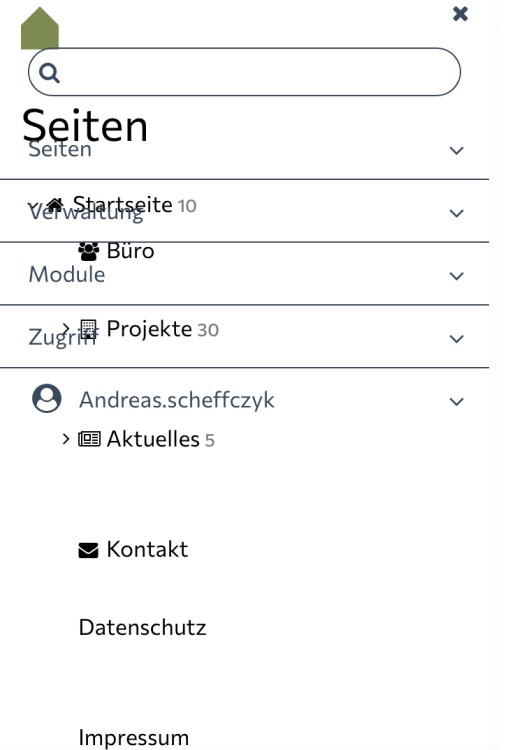
AndZyk
Members-
Posts
708 -
Joined
-
Days Won
10
AndZyk last won the day on December 18 2024
AndZyk had the most liked content!
Recent Profile Visitors
9,034 profile views
AndZyk's Achievements
-
Hi @horst, here is the link to the discussion: https://github.com/FortAwesome/Font-Awesome/discussions/21364 Regards, Andreas
-
Thank you for remembering me. The original GitHub request was by me. I think there are still many people using Font Awesome (12K stars on the repo), but if they did not include ProcessWire after 9 years, I would not get my hopes up. 😅 But we could still try. Do you want to open a discussion or should I? Regards, Andreas
-
Ok, so it seems that you have 10 000 free requests per month, so maybe you can still use it. 😉 Are you using your own reCAPTCHA script or with FormBuilder? If it is your own script I think you could set your a treeshold score, for example 0.6 or so. Regards, Andreas
-
I like Google reCAPTCHA but at the end of the year it won't be free anymore. So its time to look for an alternative. But right now I have no alternative to recommend. ☺️
-
You can set custom icons for your Repeater Matrix elements in the item header. 😉 https://processwire.com/blog/posts/new-repeater-and-repeater-matrix-features/#custom-icons-for-repeater-types
-
Is there a way to remove sites from the ProcessWire Sites directory, that are no longer powered by ProcessWire or does this happen automatic? https://processwire.com/sites/ Sadly, I have a few websites, that are no longer powered by ProcessWire anymore. 🙁
-
AndZyk started following [Solved] Warning, the database time differs from PHP time
-
Hello, the hoster of our client migrated their servers and now I get this warning in the back-end when logging in: I know this topic was already answered in two other threads. I tried out this solution: At first this seemed to be a simple solution, but then I noticed that pages in the page tree were blank. So this seems to be no ideal solution. I tried to find out the name of the new timezone, the current name ist "Berlin/Europe", but how do you find out the exact name? It seems to be some Pacific timezone. I tried out different websites to find out the timezone name, but with no luck yet. 😅 In this thread are some solutions with SQL commands and hooks. But I am not experienced with SQL and don't want to touch the database: Can somebody please recommend me a simple solution to get rid of this warning? Regards, Andreas
-
What will happen to developer directory?https://directory.processwire.com/ It is not mentioned anymore on the website but you can still find it on Google. You cannot login anymore. At this point I think it should either be deleted or relaunched. 😆 Regards, Andreas
-
Is it possible to change the color of links in the new admin theme? I have set a new main color in the module settings and in the admin.css with --pw-main-color, like recommended. But the links of modules or the login screen have still this styling: a, .uk-link { color: #e83561; text-decoration: none; cursor: pointer; } There seems to be no CSS variable. Is this intentional? Regards, Andreas
-
Congratulations to the new website. 🎉
-
Captured on iPhone 8 Safari (yes my phone is old) The navigation has issues and the page tree could look more compact. 😉
-
Hello @ryan, I meant the headers of repeater items. For my taste they are to subtle in the new admin theme and should be styled more likes button, as they were before. They contain most of the time the most content in my case and therefore should be styled more important. Regards, Andreas
-
I have tried to customize the new admin theme and here are some of my impressions: Pros Easy to customize colors with CSS variables Light and dark mode styling No extra module for customization Cons Only a set of colors can be customized easy You cannot customize for example the global font family, font size and everything else easy as with the Less module. For that you need !important statements The inputs of repeaters have the same background color as every other input Currently I am mixed. Although I like the improvements and appreciate the new direction, there is a trade off in the customization of everything else other than colors. I like to style the font family, font size and other aspects as well. But probably I am the only one doing that. 🙈 But as always thank you for everyone involved in improving the admin theme to make it more modern. 👏 Regards, Andreas
-
It never bothered me, but now that you mention it, I also would rather prefer a more classic login form. 😄 Source









